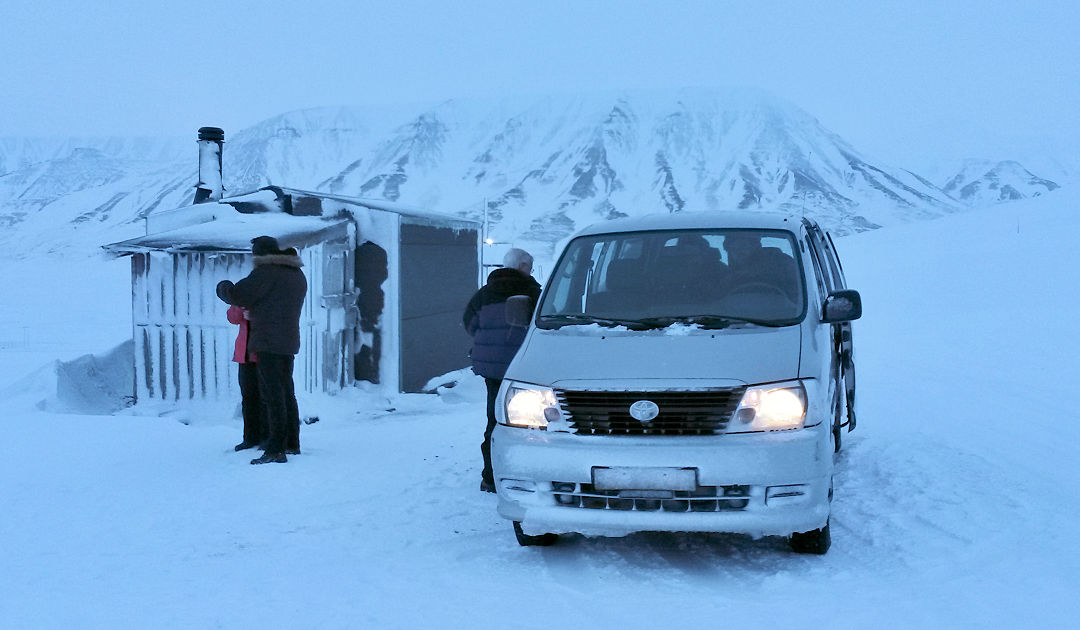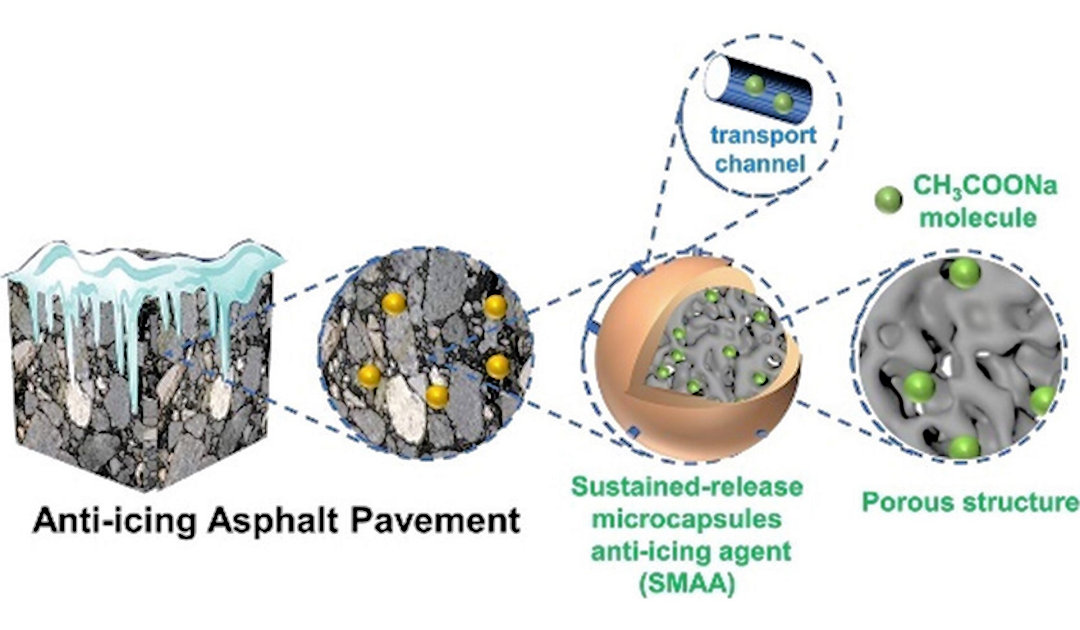
Ice and snow often determine and influence the transport routes of people and goods in the Arctic regions. While outside of communities they often form the solid ground on which not only snowmobiles but also cars and trucks can drive, in towns they often become a problem, just everwhere else. Chinese researchers have now developed a method for keeping asphalt roads free of ice and snow in the future, which could perhaps also be applied in Arctic communities.
Microcapsules filled with a chloride-free salt mixture and mixed with asphalt before it is used for road construction is the proposed solution developed and tested by a Chinese research team from Hebei University and the Chinese Ministry of Transport. The test results show that the mixture reduces the freezing point of water to -21°C and the life and efficiency of the sustainable delivery of the mixture would last between seven and eight years. The work has now been published and presented in the American Chemical Society journal ACS Omega.


A system that melts ice and snow on the asphalt has been known for some time. But previous systems were either not efficient enough in terms of lifespan or not environmentally friendly enough, the group states in its paper. Therefore, the research group led by Yarong Peng, first author Quansheng Zhao and Xiaomeng Chu developed a new system based on more sustainable and environmentally friendly materials and simpler, less expensive methods. The basis for this is formed by the chloride-free salt mixture of sodium acetate, which is produced from the pyrolysis waste of biomass plants and simple sodium carbonate. The researchers incorporated this into a skeleton of porous material that can be made from fly ash from steel production and encased it in a styrene-acrylic-acrylate copolymer made from simple materials. This shell forms water channels that ensure that the anti-icing agent inside is released only slowly, thus increasing the life of the asphalt layer deicing to seven to eight years. Tested under real conditions, the group was able to show that an asphalt layer as little as 5 centimeters thick was sufficient for the freezing point of water on the asphalt to be lowered to below -20°C. “This study provided a new idea and a new perspective for the development of the snow melting agent for the anti-icing asphalt pavement. The obtained product has promising prospects for practical applications,” the group of authors writes about their findings.



The method and materials of the system developed by Peng and his colleagues could mean a way out of the dilemma faced by many places in the Arctic regions. Especially in the far northern communities of Nunavut, Greenland, Svalbard and Alaska, the roads are quite vulnerable to the harsh environmental conditions. Roads are rarely paved, especially in smaller communities, in part because freezing water and mechanical snow removal methods, which are inefficient anyway, cause damage to the infrastructure itself, resulting in high maintenance costs. For the same reason, the important airfields are often only gravel runways. Paved roads and airfields are mostly found in larger towns like Iqaluit, Nuuk, Ilulissat or Longyearbyen or then further south in Alaska, Canada and northern Scandinavia. But here, too, the problems are the same. In addition, there is also the great environmental damage caused by the salt mixtures that are spread, mostly due to the addition of chloride. According to the study’s team of authors, all of these problems could be reduced by the potential of the new anti-icing method and a cost-effective, more environmentally friendly and, above all, easier-to-manufacture agent could be developed.
Dr Michael Wenger, PolarJournal
More on the topic





